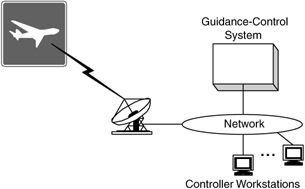3.15 Exercises
3.15 Exercises
-
Initial conditions for your network project consist of the following categories: type of network project, scope of network project, and architecture/design goals. Develop three sets of initial conditions (each containing one element from each category) and give an example network project for each set.
-
For each set of application performance requirements shown in Figure 3.33, classify the network as single-tier or multitier performance.
Application Set
Performance Requirements
Capacity
Reliability
Delay
Application Set 1:
Application 1
150 Kb/s
N/A
N/A
Application 2
200 Kb/s
N/A
N/A
Application 3
90 Kb/s
N/A
N/A
Application 4
120 Kb/s
N/A
N/A
Application Set 2:
Application 1
75 Kb/s
99.999%
N/A
Application 2
150 Kb/s
N/A
N/A
Application 3
250 Kb/s
99.999%
N/A
Application 4
200 Kb/s
N/A
N/A
Application Set 3:
Application 1
1.1 Mb/s
99.95%
40 ms
Application 2
800 Kb/s
N/A
N/A
Application 3
950 Kb/s
N/A
100 ms
Application 4
120 Kb/s
N/A
N/A
Figure 3.33: Application performance requirements for Exercise 2. -
Your customer is a hospital that wants to upgrade its LAN. Develop a questionnaire to gather requirements from users, hospital management, and staff. What kinds of questions would you ask to better understand the environment?
-
Consider a network project in which you cannot talk to users or staff. What resources can you use to gather user, application, device, and network requirements? Briefly outline a method for gathering and deriving requirements in the absence of user and staff involvement.
-
You want to test the performance of Web sessions across a wireless access network, between PCs and an IP router that terminates point-to-point protocol (PPP) and PPP over Ethernet (PPPoE) sessions, as shown in Figure 3.34. Describe how you would test performance, both on a testbed and on the existing network. List any equipment, software, and networking devices you would use.

Figure 3.34: Wireless connections to corporate network using PPP and PPPoE. -
Show how the following changes to the following requirement would be tracked/managed. Use either the paragraph or the tabular form to record changes.
Requirement: 12Oct2002. Network must be capable of supporting up to 2000 Fast Ethernet interfaces, aggregated to a 1 Gb/s or greater capacity backbone spanning all 12 buildings across the campus.
-
Change "Fast Ethernet" to "Fast Ethernet or Gigabit Ethernet," dated 5Jan2003.
-
Delete "12 buildings across the campus," dated 7Jan2003.
-
Change "2000" to "3500," dated 10Feb2003.
-
Add "10 buildings listed in Appendix A," dated 20Jan2003.
-
Change "Fast Ethernet" to "Fast Ethernet or Gigabit Ethernet" to "10, 100, or 1000 Mb/s," dated 5Mar2003.
-
Change "aggregated" to "aggregated within each building," dated 21Apr2003.
-
-
Service metrics are used to monitor, measure, and verify services in the network and to determine whether performance requirements are being met. Therefore, service metrics must be meaningful to the network operators, managers, users, and staff. For each performance requirement given, describe a service metric that could be used to measure and verify the requirement.
-
Reliability of a T1 link between an enterprise network and its ISP, with IP routers on each end of the T1 line
-
Round-trip delay between devices on network A and servers on server LAN B
-
Average traffic rate in and out of a compute server, measured across all four of its LAN interfaces over 15-minute intervals
-
-
Given an MTBCF requirement of 8000 hours and an MTTR requirement of 4 hours, calculate an availability requirement.
-
Describe two ways to make an uptime requirement of 99.999% more precise.
-
You are developing a network for the FAA for a telemetry-processing application that consists of two components: an automated guidance-control system that will analyze telemetry data from airplanes and a motion-visualization system used by controllers at their workstations (Figure 3.35). In your analysis of this application, you have determined that the application requires a maximum one-way delay of 20 ms between an airplane and the guidance-control system. In addition, controllers interact with airplanes via the motion-visualization system with delays on the order of HRT. Develop upper and lower delay bounds for this application, and show them on a graph.

Figure 3.35: Diagram of system for Exercise 10.
EAN: 2147483647
Pages: 161